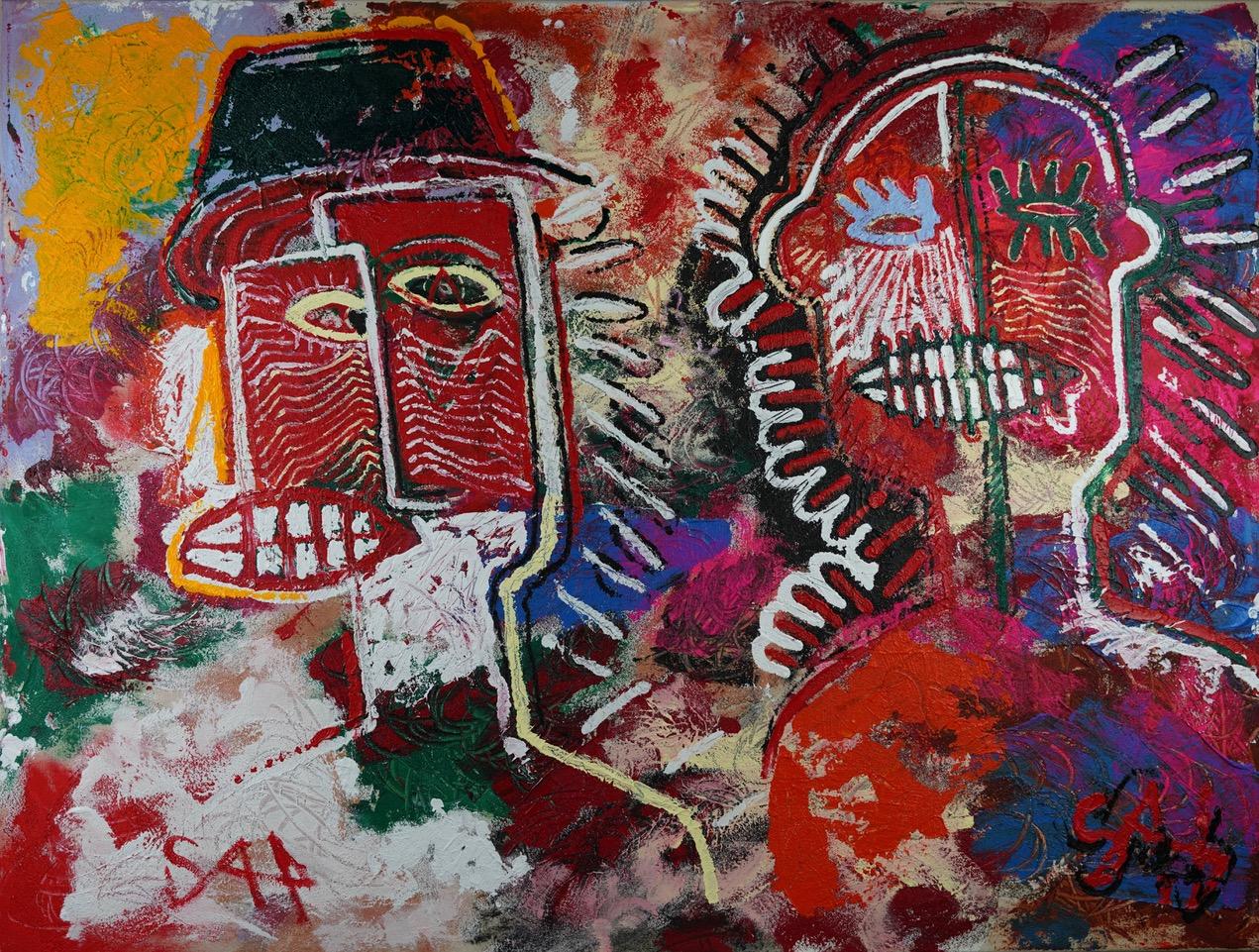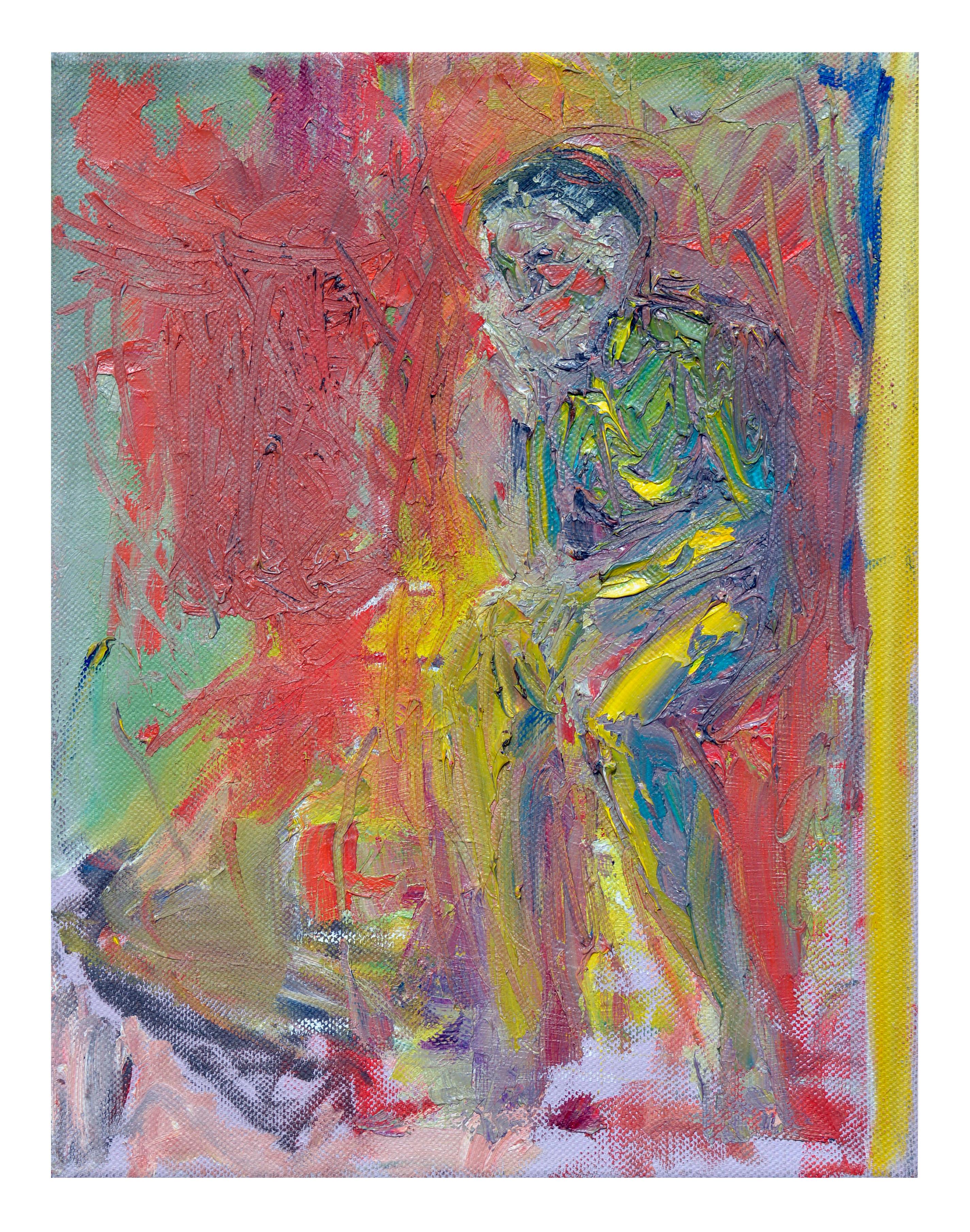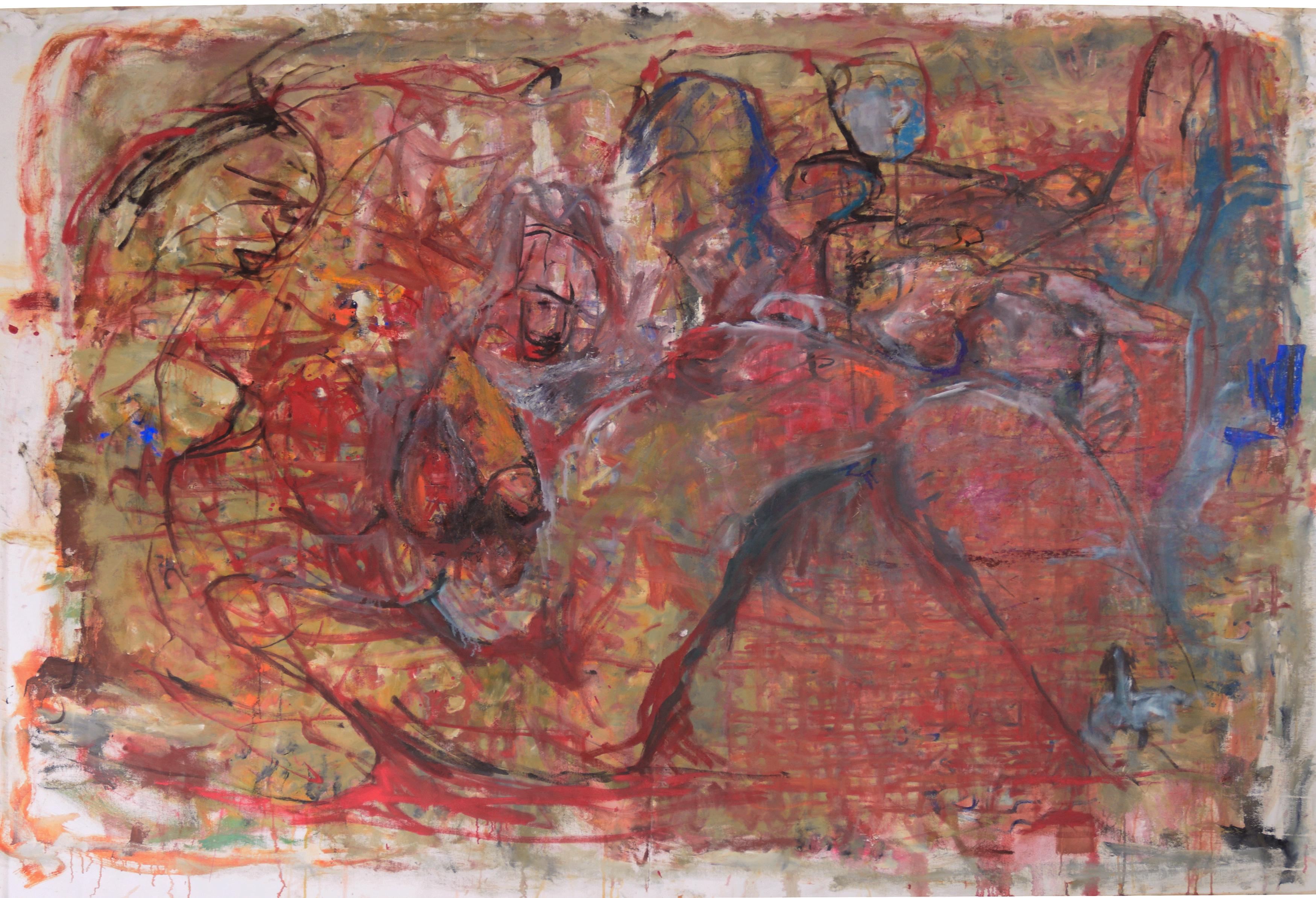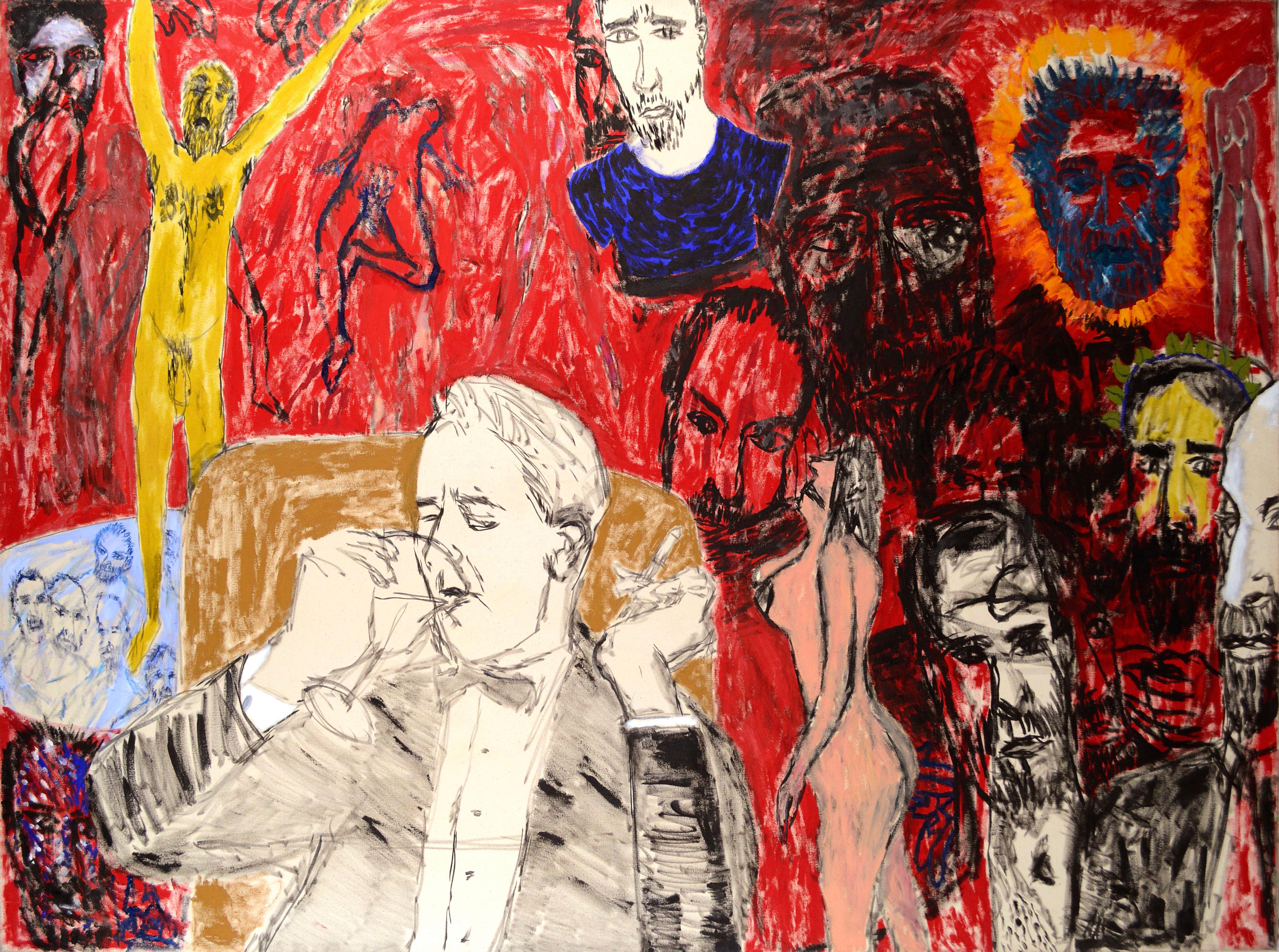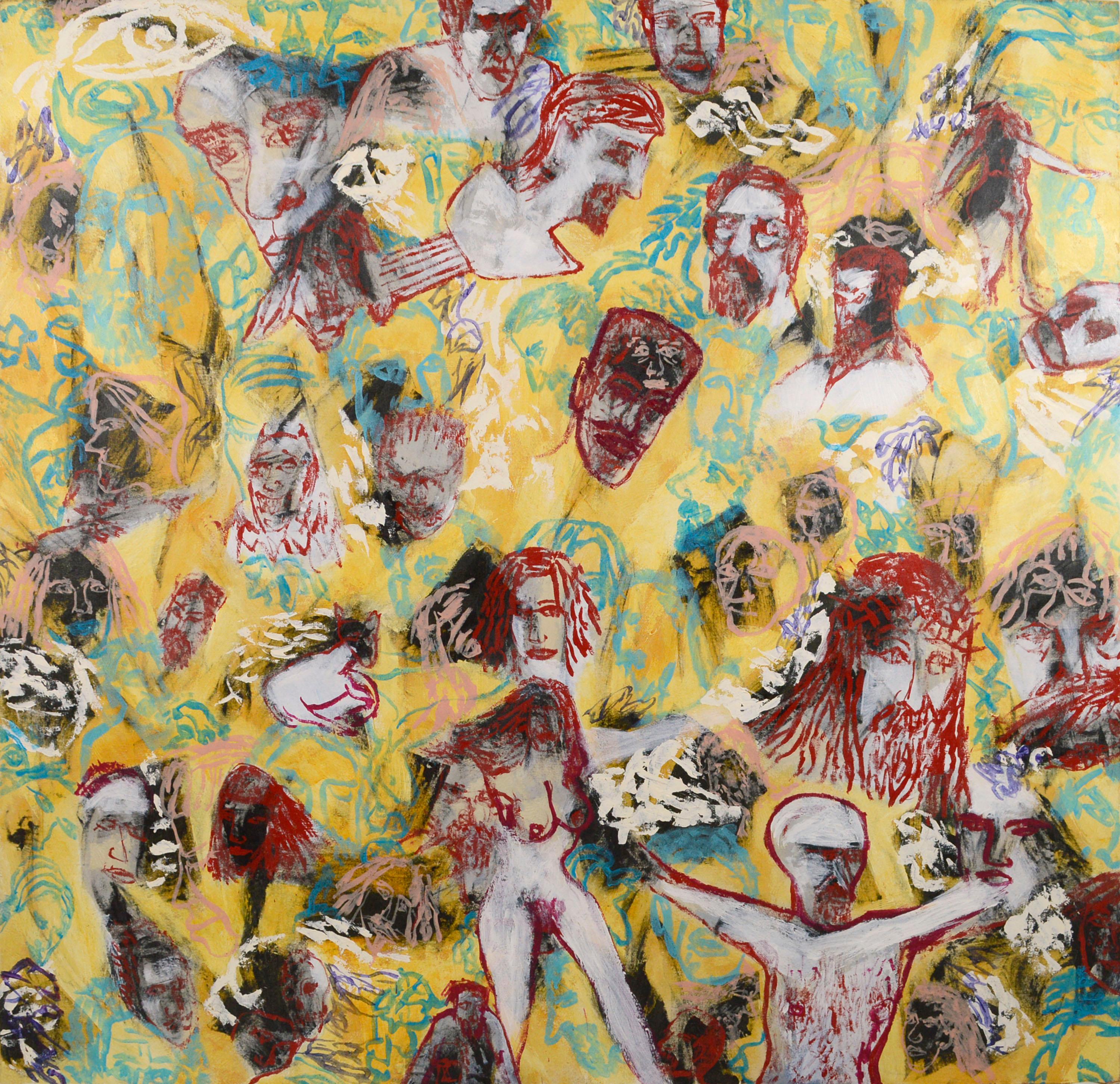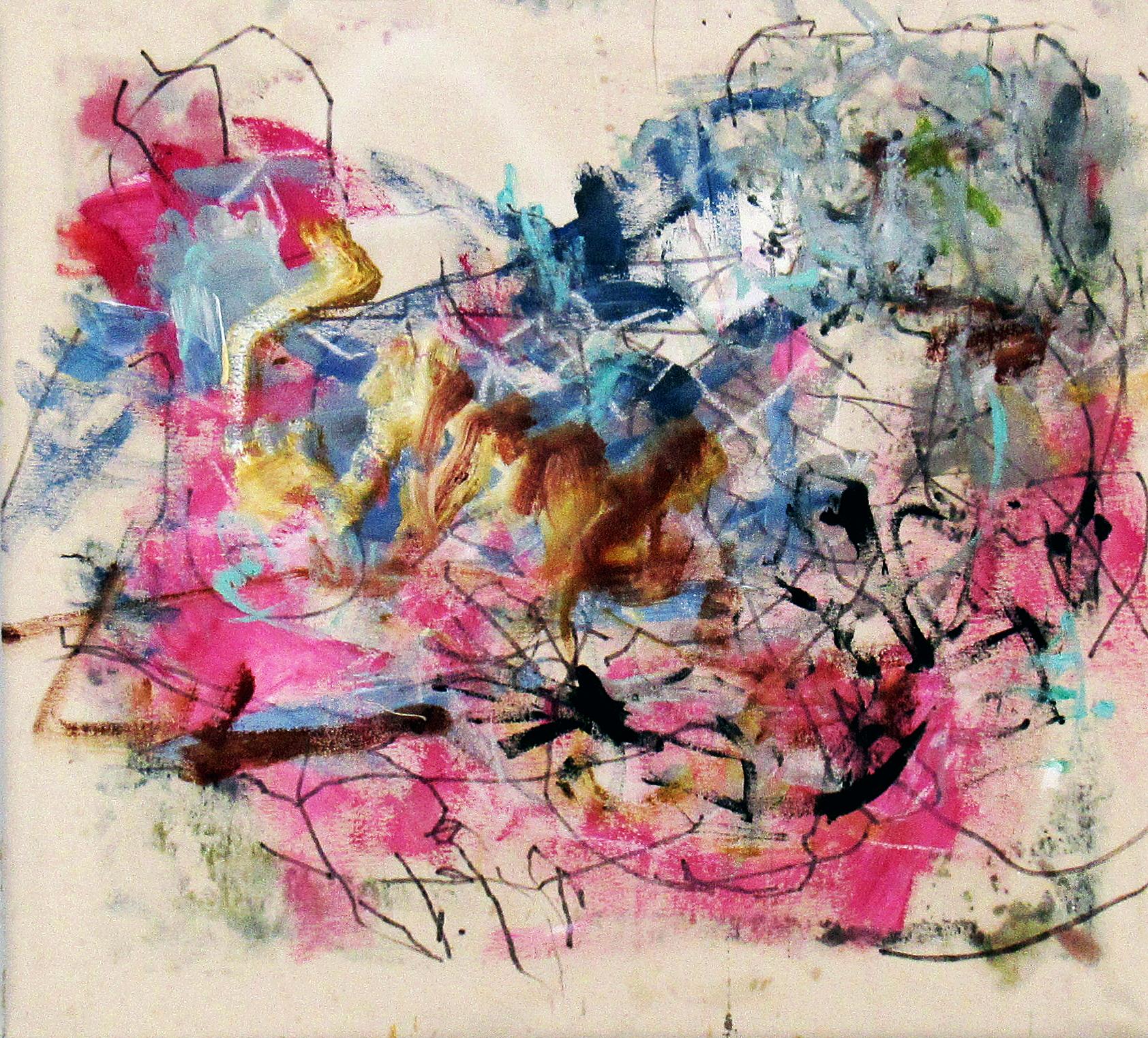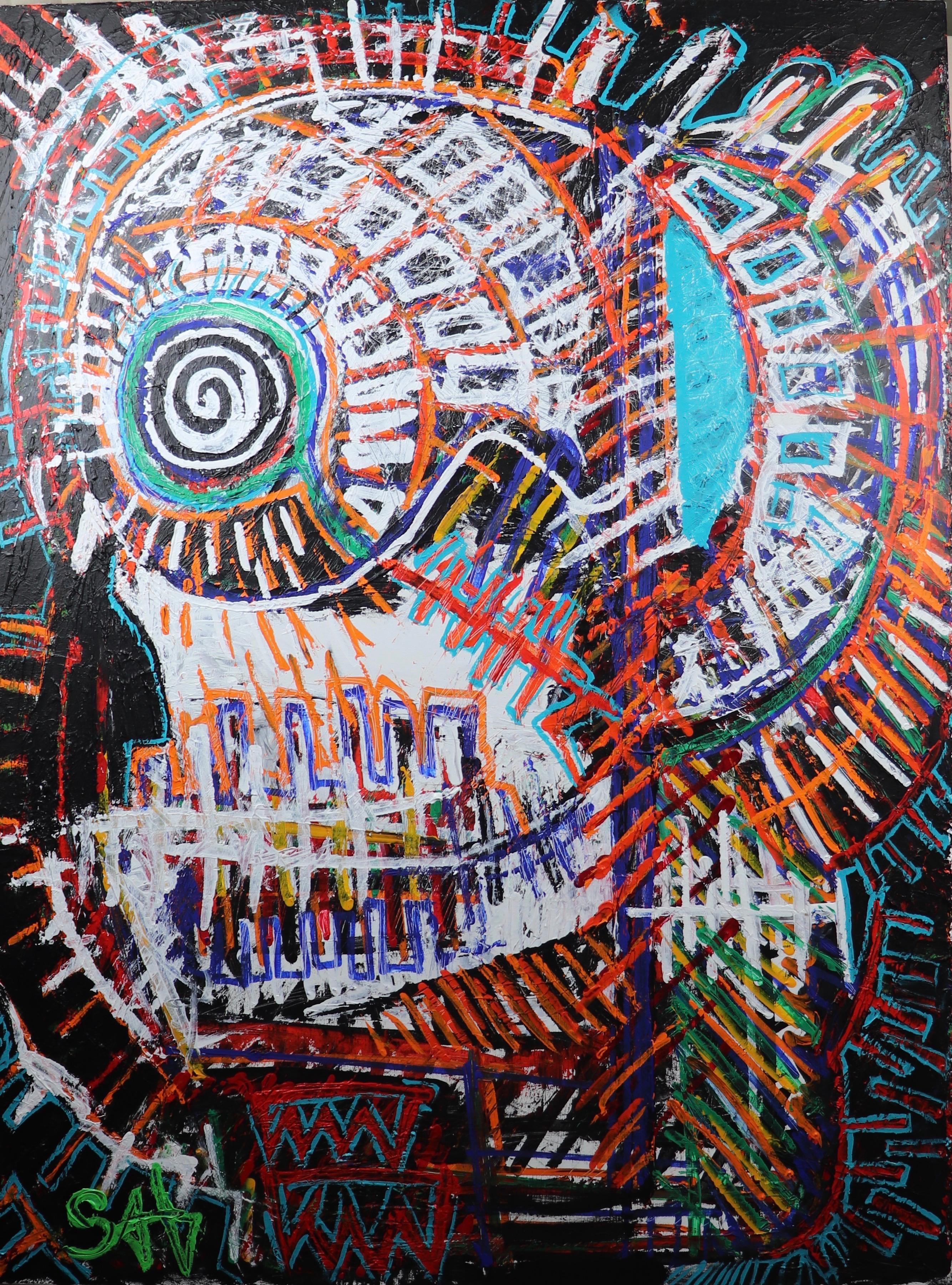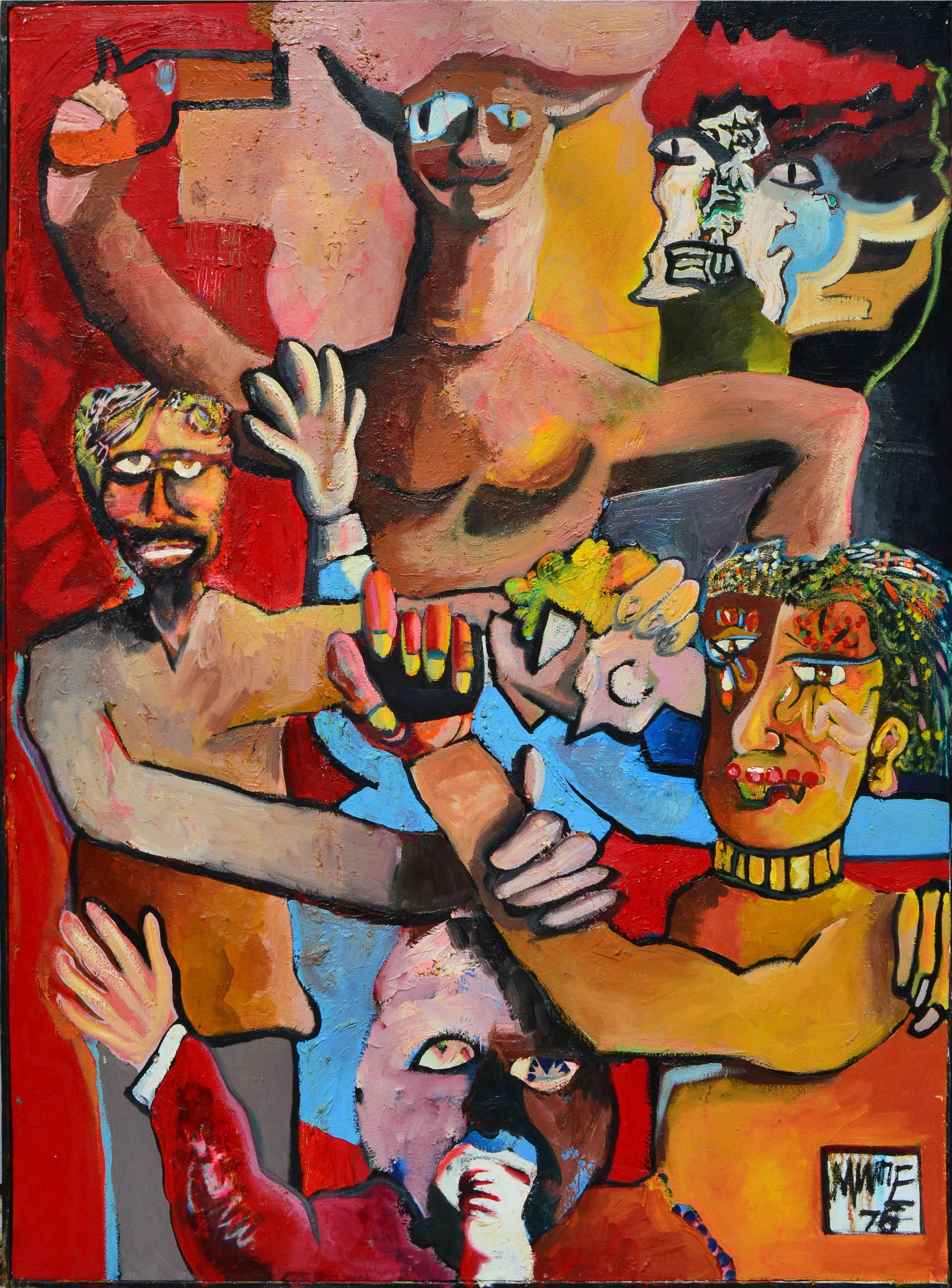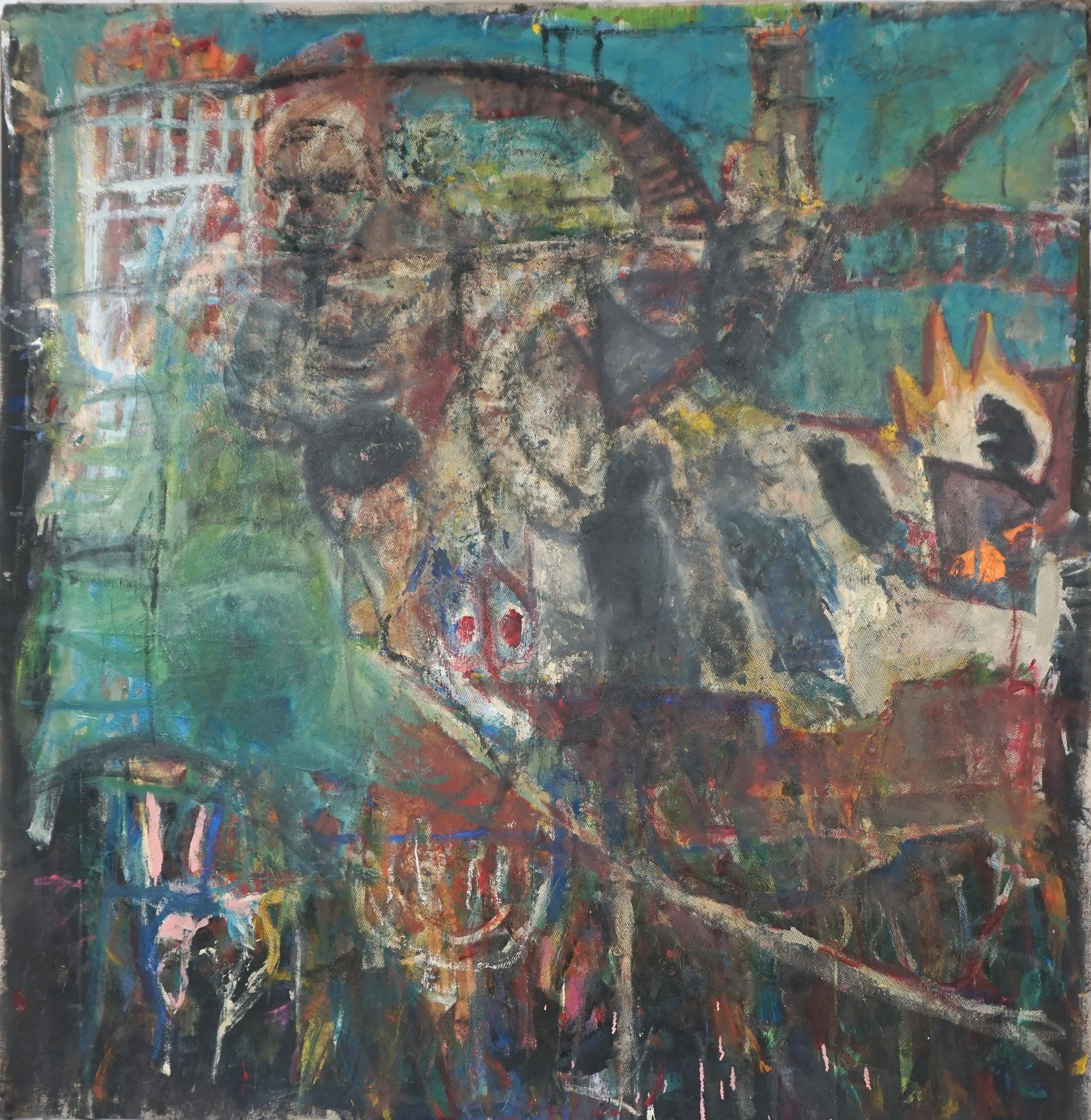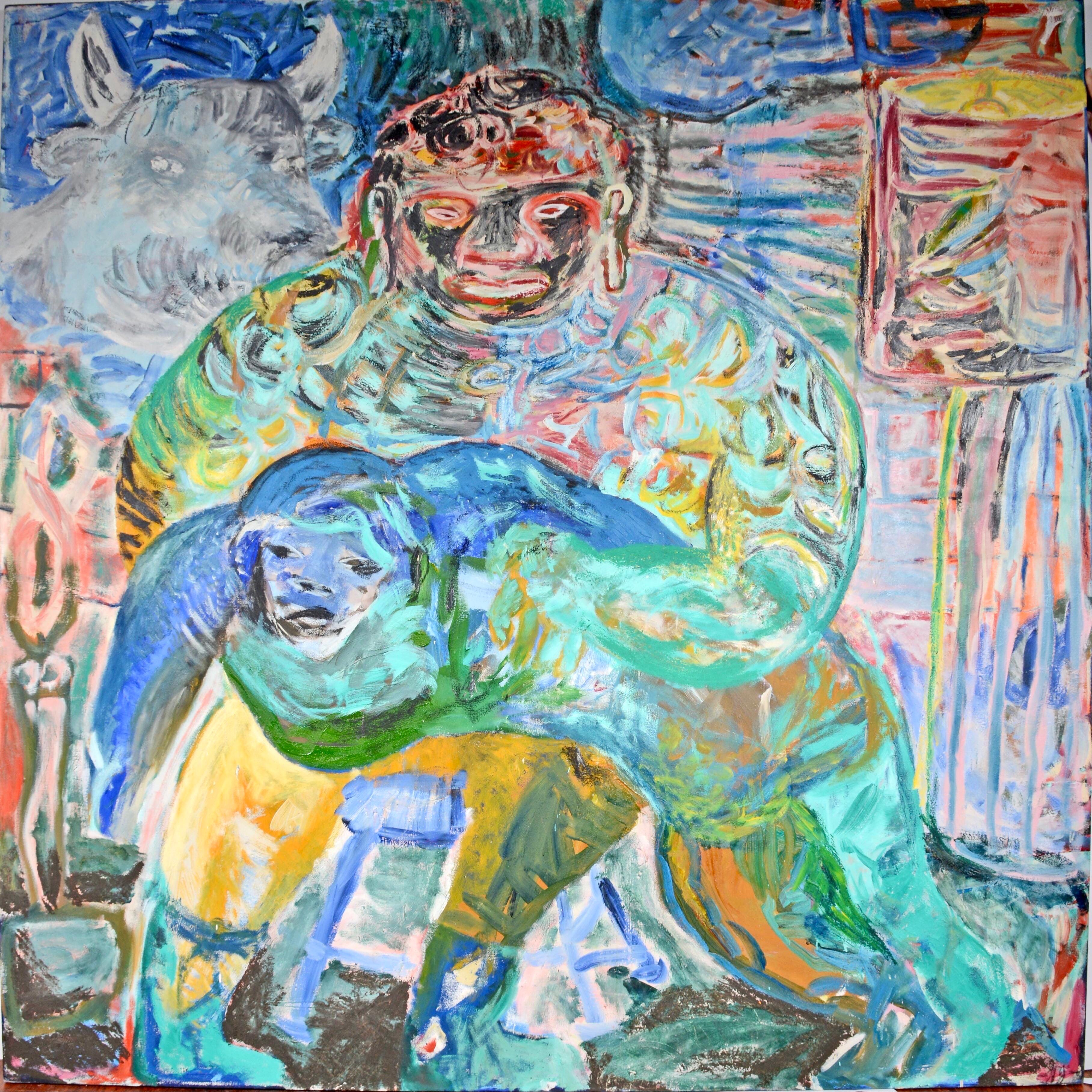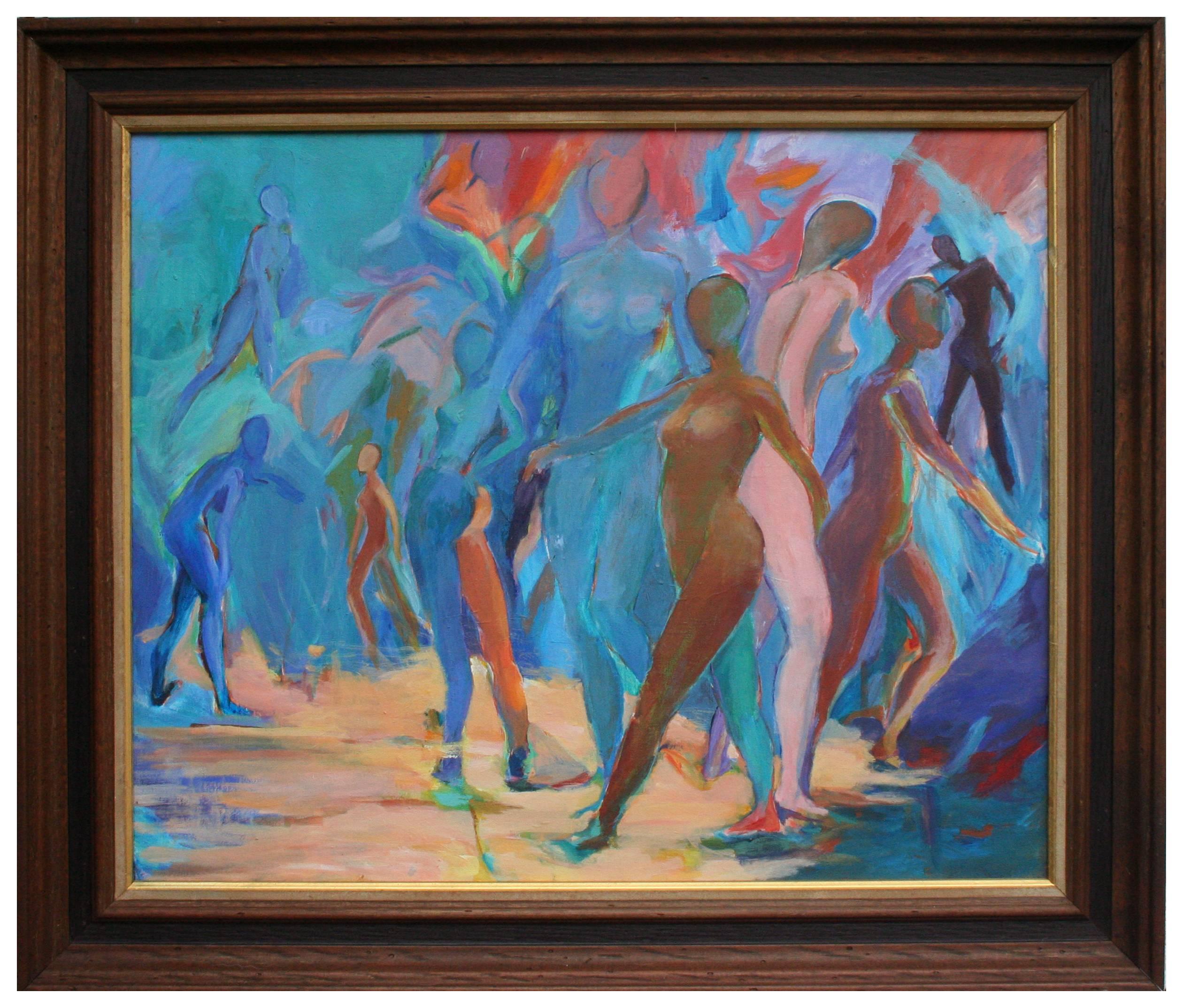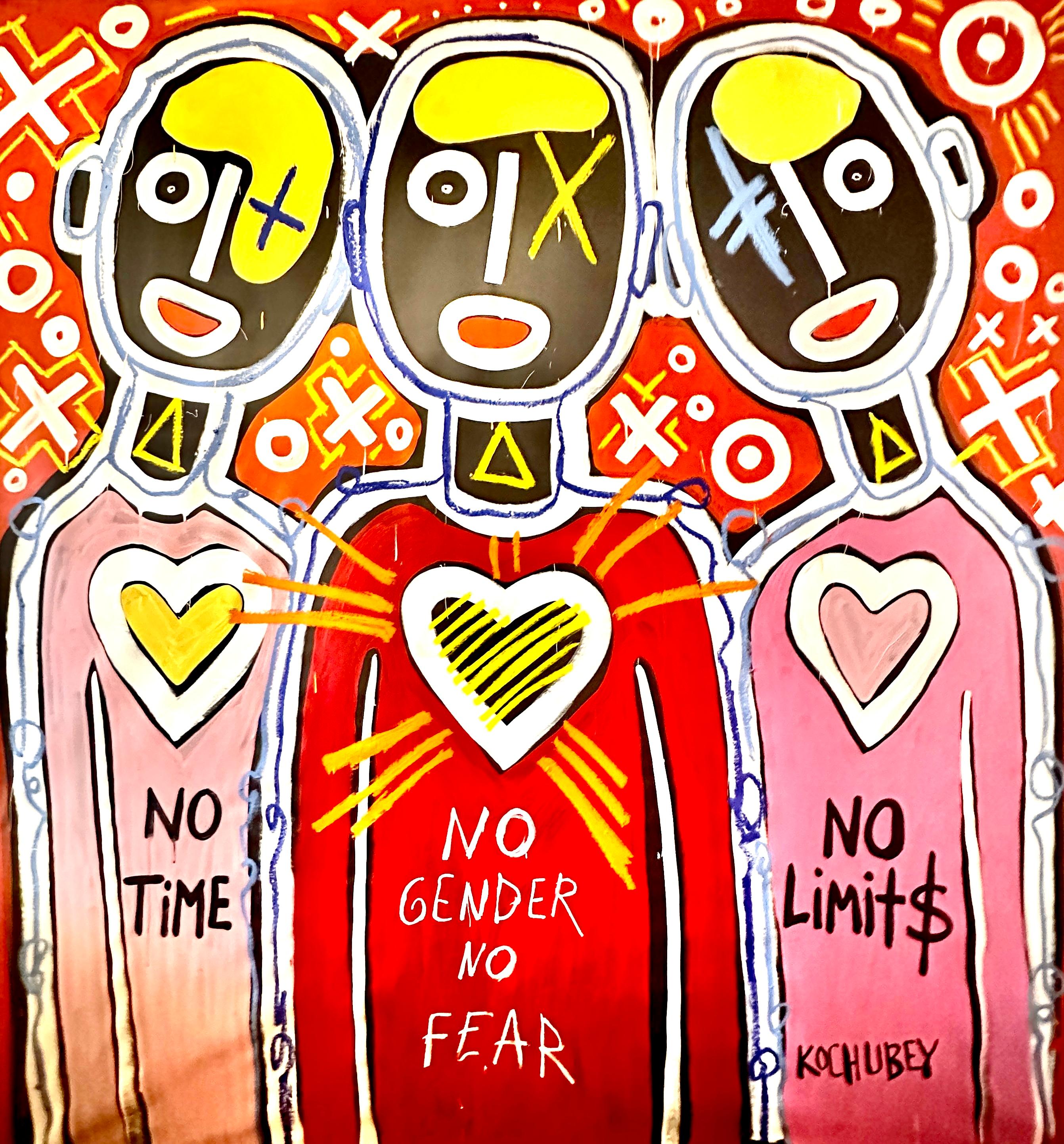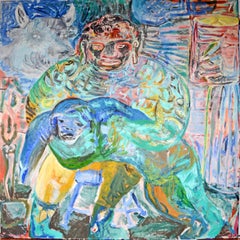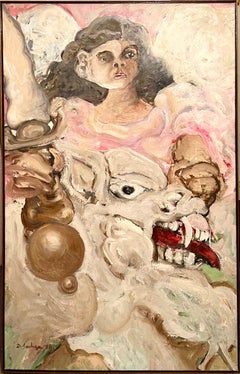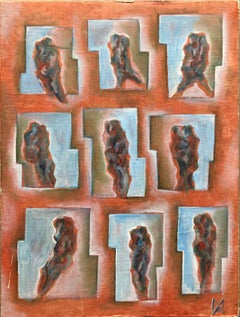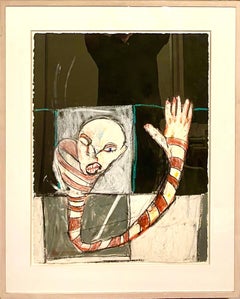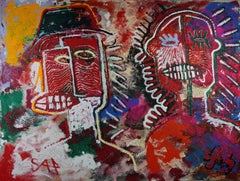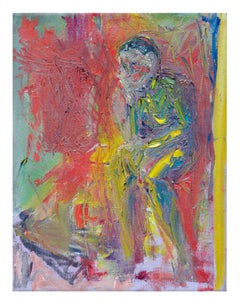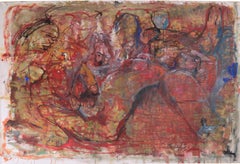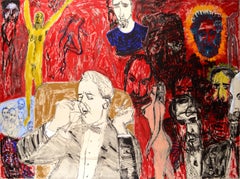
Large Figurative Neo Expressionist Polish Oil Painting Janusz Akermann Brutalist
View Similar Items
Want more images or videos?
Request additional images or videos from the seller
1 of 15
Janusz AkermannLarge Figurative Neo Expressionist Polish Oil Painting Janusz Akermann Brutalist1990
1990
About the Item
- Creator:Janusz Akermann
- Creation Year:1990
- Dimensions:Height: 30 in (76.2 cm)Width: 51.75 in (131.45 cm)
- Medium:
- Movement & Style:
- Period:
- Condition:
- Gallery Location:Surfside, FL
- Reference Number:1stDibs: LU3828070682
About the Seller
4.9
Platinum Seller
Premium sellers with a 4.7+ rating and 24-hour response times
Established in 1995
1stDibs seller since 2014
1,752 sales on 1stDibs
Typical response time: 1 hour
Authenticity Guarantee
In the unlikely event there’s an issue with an item’s authenticity, contact us within 1 year for a full refund. DetailsMoney-Back Guarantee
If your item is not as described, is damaged in transit, or does not arrive, contact us within 7 days for a full refund. Details24-Hour Cancellation
You have a 24-hour grace period in which to reconsider your purchase, with no questions asked.Vetted Professional Sellers
Our world-class sellers must adhere to strict standards for service and quality, maintaining the integrity of our listings.Price-Match Guarantee
If you find that a seller listed the same item for a lower price elsewhere, we’ll match it.Trusted Global Delivery
Our best-in-class carrier network provides specialized shipping options worldwide, including custom delivery.More From This Seller
View AllLarge Colorful 1983 Neo Expressionist Roberto Juarez Oil Painting Tron Family
By Roberto Juarez
Located in Surfside, FL
Roberto Juarez, (American, 1952- )
Tron Family.
1983. Signed, dated & titled.
Oil and oil stick on canvas.
Provenance: Robert Miller Gallery, NY., Mira Godard Gallery, Toronto, Ontario, CA
Roberto Juarez (born 1952) is an American visual artist known for his paintings, murals, and mixed-media works.
Born in Chicago, (parents of both Mexican and Puerto Rican Latino heritage) Juarez received his B.F.A. at the San Francisco Art Institute (1977) and pursued graduate studies in Television and Film at the University of California, Los Angeles. Juarez frequently employs painterly floral motifs, which are inspired by the traditions of Hispanic, Latin American and non-Western painting. Roberto Juarez has been a significant presence in the art worlds of New York, Miami, Colorado, and beyond since the early 1980s. In 1978, Juarez completed his graduate thesis for UCLA in Paris and decided not to return to L.A. Juarez relocated to New York City, where in 1981, Ellen Stewart offered Juarez a former garage owned by La MaMa Experimental Theatre Club as an artist studio. The space, which had no water or electricity, was offered to Juarez rent-free, provided that he clean and maintain it. He was active in the Neo Expressionist era of the the late 1980's along with Julian Schnabel and David Salle.
Throughout the 80s and 90s Juarez painted the branching forms of trees and flowers. While living in Miami in the 90s, Juarez began to incorporate peat moss, rice paper, and other natural materials in his canvases. Since 2000, and his move from Miami back to New York, Juarez's imagery turned more abstract, typically featuring geometric forms and systems. In a review from this period, art critic Grace Glueck noted that his works feature “a contrast between the softness of the grounds – blends of transparent and opaque materials in muted colors – and their strong geometric-organic motifs." In his use of elements of nature to portray an idyllic unity, Juarez looks back to such early-20th-century painters as Franz Marc and Henri Matisse.
He has done prints with Shark’s Ink Studios in Lyons and Anderson Ranch Arts Center as well as Tamarind Institute.
Roberto Juarez is a visual artist who has been active in the areas of painting, printmaking, drawing, and large-scale public commissions throughout his career.
His work has been exhibited throughout the United States and Mexico, and is included in major museum collections such as the Brooklyn Museum, the Metropolitan Museum of Art, El Museo del Barrio, the Denver Art Museum, the Kemper Museum of Contemporary Art, the Los Angeles County Museum of Art, Pérez Art Museum Miami, the Newark Museum, and the Speed Art Museum. He has completed public art projects and murals for the Miami International Airport, Grand Central Terminal, the Miami-Dade County Courthouse, Whitman College, and the University of Michigan College of Engineering.
Juarez won the Prix de Rome in 1997 and was a Guggenheim Fellow in 2001-2002.
Select Solo Exhibitions
Boulder Museum of Contemporary Art, Boulder, CO
La MaMa Galleria, New York, NY
Pace Prints New York, NY
Charles Cowles Gallery, New York, NY
Kemper Museum of Contemporary Art, Kansas City, KS
Museum of Contemporary Art, North Miami, FL, Bonnie Clearwater, Curator and Author
Robert Miller Gallery, New York, NY
Fredric Snitzer Gallery, Miami, FL
Galeria Ramis Barquet, Monterrey, Mexico
Richard Green Gallery, Santa Monica, CA
Stephen Wirtz Gallery, San Francisco, CA
Andre Emmerich Gallery, Zurich
Mira Godard Gallery, Toronto, Canada
San Francisco Art Institute, San Francisco, CA
Select Group Exhibitions
2018 May China 2018, China National Academy of Painting, Beijing, China
2017 Love Among the Ruins, 56 Bleecker Gallery and Late 80's New York, Howl! Arts Incorporated, New York, NY
2015 Inside the Episode: curated by Jack Pierson, Launch F18 Gallery, New York, NY
2015 MTA Arts Design Illustrates the City, The Museum of American Illustration at The Society of Illustrators, New York
2015 The Annual; National Academy Museum, New York, NY
2008 One of a Kind; Monoprints & Monotypes, Spencertown Academy Art Center, Spencertown, New York
2001 Roberto Juarez and Julio Galan...
Category
1980s Neo-Expressionist Abstract Paintings
Materials
Canvas, Oil Crayon, Oil
Large Venezuelan Expressionist Oil Painting Diego Barboza Latin American Master
Located in Surfside, FL
Diego Barboza - 1945-2003
Hand signed and dated 1988 Oil on Canvas
Diego Barboza was born the Carabobo street of Maracaibo, Venezuela on February 4, 1945. He was a Venezuelan Neo Figurative Painter who is among the most famous and influential figures in Venezuelan art history. Diego Barboza opened a new chapter in Latin America, beyond the surreal or the magical realism of the Modern Latin American Masters. He created a new language of dislocation and transgression. Personages became distorted to the point that was very exaggerated forms His figures twisted and contorted without losing their presence or their pull. Extremities muscles, and bones burst into an explosive compound of divergent and convergent lines. Through eruptive brushstrokes and fractured outlines. Barboza created a world of illusions.
Barboza was born into a upper-middle-class family. He stopped going to school at 12 years old, and he registered himself at the School of Visual Art in the City of Maracaibo Venezuela. Barboza studied at the School of Visual Arts in Caracas, Venezuela. Barboza began his training as an artist at age 12 in his native Maracaibo when he left formal education to enroll in the then School of Plastic Arts of Zulia, then Julio Arraga School of Plastic Arts, where he was a student in the modeling, collage and Drawing of Angelina Curiel. His first collages, in the sixties, show the influence of American Pop Art. In 1967 he exhibited at the Ateneo de Caracas his series 'Los Ratones', a proposal then 'criticized by critics as unprecedented in Venezuela'. In his tribute to the film "Nosferatu" Friedrich Murnau included 32 drawings as well as two-dimensional objects. In 1968 he moved to London where he studied at the London College of Printing. From that time is his '30 Girls with Nets', an action in which 30 students of the London College of Printing, dressed in black and covered by white nets, toured London public places, behaving naturally. His 'street expressions', which he later called 'poetic actions', symbolized a breakdown of social restraints through unusual behaviors that sought to provoke public reactions. Upon his return to Venezuela in 1973, Barboza continues with this line of work, being recognized as one of the initiators of Venezuelan conceptual art. In the 1980's Diego Barboza turned to painting, the New Venezuelan Figuration. Here belongings and the feminine figure fill the work of that time, in which he embodied his intimacy and daily life through scenes of furnishings and flowers that included objects from his workshop and home. His nudes were made from live model, then to follow the path of distortion resulting in their unmistakable females: a figure that represented their personal way of appreciating beauty. Barboza presented his first individual exhibition at the Centro de Bellas Artes of Maracaibo Venezuela. In 1963, he traveled to London when the Conceptual Art movement started, he had the support of the London New Art Lab Gallery. On March 7, 1970 Barboza displayed his first work on Conceptual Art, which he called Art of Action. In London with the performance of 30 Girls with nets (30 Muchachas con redes). His second work was Nets and Hats in markets and restaurants (Con sombreros y redes en mercados y restaurantes). In London UK. His third The Centerpiece (El Ciempies) and the fourth Expression on a laundry-mat (Expresiones en una lavandería)
In 1974. Baboza returned to Venezuela. Where he presented two very important Conceptual Art works: The Armadillo Box (La Caja del Cachicamo) and from the School of Athens to the New School of Caracas (De la Escuela de Atenas a la Nueva Escuela de Caracas). Closing his cycle of Conceptual Art creation. IN Venezuela a sort of impromptu academy started up at Claudio Perna’s house. Eugenio Espinoza, Roberto Obregón, Antonieta Sosa, Alfred Wenemoser, Yeni and Nan, Sigfredo Chacón, Diego Barboza, Luis Villamizar, Margherita D’Amico, Pedro Terán, Alfredo del Mónaco, as well as international figures who happened to be visiting Venezuela such as Antoni Muntadas, Charlotte Moorman, and Roman Polanski would gather there. Venezuela, especially Caracas, was a rich field of action for modernism in South America. Venezuelan Geometric Abstraction, Op art and Kinetic Art dominated through crucial figures like Jesús Rafael Soto, Gego, Alejandro Otero, and Carlos Cruz Diez, the country’s kinetic art made a fundamental contribution internationally. The Greater London Arts Association and the Arts Council of Great Britain did several exhibitions of (North, Central, South, London, Wales, Scotland and Ulster) to show the actual Visual Arts in all of the United Kingdom and Diego Barboza was invited for this event with a solo exhibition, expressions around a cylinder (Expresiones alrededor de un cilindro).
Diego has made numerous solo and group exhibitions, obtaining rewards since 1963. He is represented in the most important museums of Venezuela, as well as in England, Brazil, Colombia and Cuba. In 1986 he was awarded the Municipal Visual Arts Award of the Municipal Council of the Federal District and in 1997 he received the National Prize for Plastic Arts granted by the National Council of Culture, CONAC.
Select Group Exhibitions
1964 Ateneo de Caracas, Caracas, Venezuela
1965 Salón Arturo Michelena, Valencia, Venezuela
1968 Salón Oficial Museo de Bellas Artes, Caracas, Venezuela
1971 Art Spectrum London, London, Great Britain
1972 Serpentine Gallery, London, Great Britain
1973 Midland Group Gallery, London, Great Britain
1974 Galería BANAP, Caracas, Venezuela
1975 Casa de Las Américas, La Habana, Cuba
Museo de Bellas Artes, Caracas
Galería de Arte Nuevo, Buenos Aires, Argentina
1976 Museo de Arte Moderno, Bogotá, Colombia
Museo de Arte Contemporáneo, Sao Paulo, Brazil
Museo de la Tertulia, Cali, Colombia
Bienal de Venecia, Venecia, Italy
1979 Centro de Artes y Comunicación, Buenos Aires, Argentina
1980 Galería NBC, Memphis, Tennessee, USA
1981 Galería de Arte Nacional, Caracas, Venezuela
Museo de Arte Contemporáneo, Medellín, Colombia
Museo de Bellas Artes, Caracas, Venezuela
1986 Museo de Arte La Rinconada, Caracas, Venezuela
1989 Galería Venzor, Chicago, Illinois, USA
1990 Museo Bellas Artes, Santiago de Chile, Chile
1992 Ambrosino Gallery, Coral Gables, Florida, USA
1993 Museo de Arte de Petare, Caracas, Venezuela
Centro de Arte Lia Bermúdez, Maracaibo, Venezuela
1994 Galería Namia Mondolfi, Caracas, Venezuela
1995 Galería Art Nouveau, Maracaibo, Venezuela
Galería Cesar Sassòn, Caracas, Venezuela
Maremares Resort, Puerto La Cruz, Venezuela
Galería Durban, Caracas, Venezuela
Galería Odalys, Caracas, Venezuela
1996 Centro de Arte Grupo Li, Caracas, Venezuela
Galería Uno, Caracas, Venezuela
Centro Cultural Consolidado, Caracas, Venezuela
Espacios Unión, Caracas, Venezuela
Hebraica, Caracas, Venezuela
1997 Sociedad Dramática, Maracaibo, Venezuela, Venezuela
CELARG, Caracas, Venezuela
Galería Ocre Arte, Caracas, Venezuela
Museo de Arte Contemporáneo , Maracay, Venezuela
Galería Medicci, Caracas, Venezuela
Awards
1963 Premio Estímulo - IX Salón d’Empaire, Maracaibo, Venezuela
1964 Premio José Ortìn Rodríguez - X Salón d’Empaire, Maracaibo, Venezuela
1965 Primer Premio de Dibujo - III Salón Pez Dorado, Caracas, Venezuela
1968 Premio Henrique Otero Vizcarrondo - XXIV Salón Oficial Anual de Arte Venezolano Museo de Bellas Artes,
1973 Premio Emilio Boggio...
Category
1980s Neo-Expressionist Figurative Paintings
Materials
Canvas, Oil
Matthias Alfen German Sculptor Modern Expressionist Painting Psychogram
By Matthias Alfen
Located in Surfside, FL
Matthias Alfen’s series of Janus figures are an innovation in figural art predicated on the advances made by the Futurist sculptor and painter Umberto Boccioni and the Modernist Alberto Giacometti. The qualities of chance and spontaneity, necessarily excluded in the sculptural work, are clearly evident in his drawings and paintings. “Psychograms” of unchoreographed hand movements display wide variation, repeatedly playing through one form after another. In the end, this multitude of variation serves to enhance the logic, consistency, and seductively rich appearance of Alfen’s designed sculptural works. Represented by Gallery Schuckin in New York, Paris, France, and Moscow, Russia.
Matthias Alfen’s was strongly influenced by his family’s experience during World War II. His grandfather Klemens Alfen (1894-1955) was an accomplished painter and photographer, recognized for his landscape photography and for his technique (Special Honors for Excellence in Photo-Print Technology, 1932). He enjoyed the friendship and support of many in the artistic community, a community largely influenced by its German Jewish members. Having lost his entire circle of friends under Nazi oppression. Klemens, although not Jewish, also suffered under the Nazis for refusing to join them and struggling in post-war Germany, which had nothing to offer an artist like him, Klemens took his own life.
At around the age of 16 he worked for some weeks as an assistant at his uncle’s art studio. Fritz Koenig...
Category
Late 20th Century Neo-Expressionist Abstract Paintings
Materials
Plywood, Oil
Michael Hafftka Figurative Neo Expressionist Oil Pastel Painting The Wave
By Michael Hafftka
Located in Surfside, FL
MICHAEL HAFFTKA
"The Wave"
Hand signed lower right "Hafftka"
Oil and pastel on paper, 30.5" x 22.25". Framed 39" x 31.5".
Michael Hafftka (born 1953) is an American figurative exp...
Category
1980s Neo-Expressionist Figurative Paintings
Materials
Oil Pastel, Archival Paper
Large John Hultberg SF Bay Area Artist Abstract Expressionist Oil Painting
By John Hultberg
Located in Surfside, FL
John Hultberg
Oil on canvas
Panorama of pictures. 1998
Hand signed lower right, J. Hultberg ‘98.
Artist, date, and title written on verso.
Canvas 25.5”H x 35”W, Frame 26”H x 35.5”W.
Oil painting depicting a mosaic of photographs overlooking an abstract geometric landscape.
John Hultberg (1922 – 2005) was an American Abstract expressionist and Abstract realist painter. Early in his career he was related to the Bay Area Figurative Movement; he was also a lecturer and playwright.
John Hultberg was born in 1922 in Berkeley, California. Hultberg attended Fresno State College, graduating in 1943. During World War II, he was a Navy lieutenant. After the war, his education at the California School of Fine Arts (CSFA) (now the San Francisco Art Institute) was funded by the G.I. Bill. His teachers included Mark Rothko and Clyfford Still and he was a classmate of Richard Diebenkorn, who was also a mentor, James Budd Dixon, Walter Kuhlman, Frank Lobdell, and George Stillman, which whom he created a portfolio of 17 lithographs. This 1948 portfolio, titled Drawings, has been acknowledged as a landmark in Abstract Expressionist printmaking. The group has been referred to as "The Sausalito Six," because most, lived in Sausalito, north of San Francisco. Many of the "First Generation" artists in this West Coast movement were avid fans of Abstract Expressionism, and worked in that manner, until several of them abandoned non-objective painting in favor of working with the figure. Among these First Generation Bay Area Figurative School artists were: David Park, Richard Diebenkorn, Rex Ashlock, Elmer Bischoff, Glenn Wessels, Wayne Thiebaud, Raimonds Staprans, and James Weeks. The "Bridge Generation" included the artists: Henrietta Berk, Nathan Oliveira, Theophilus Brown, Paul Wonner, Roland Petersen, John Hultberg, and Frank Lobdell. He was also a contemporary of Clay Spohn and David Park. Hultberg studied at the Art Students League of New York beginning in 1952. Hultberg was first married to Hilary Blech. In 1961 Hultberg met fellow artist Lynne Mapp Drexler...
Category
1990s Abstract Expressionist Abstract Paintings
Materials
Canvas, Oil
French Jewish Post Holocaust Abstract Painting Manner of Hundertwasser Art Brut
By Jichak Pressburger
Located in Surfside, FL
Jichak Pressburger, Painter. b. 1933, Bratislava, Czechoslovakia. A concentration camp survivior. Came to Israel aboard the ship, "The Exodus". 1964 Went to Paris. In 1979 Returned as new immigrant.
Education Tel Aviv University, B.A. in art, with Marcel Janco and Isidor Ascheim at Avni art school.
Beaux Arts, Paris with Professor Coutaud.
Itzchak Pressburger
Stays in Paris from 1963 – 1979, Resident of the “Cité des Arts” 1969-1972. Lives and works in Jerusalem since 1979.
One-Man Exhibitions
1963 Gallery Dugit, Tel-Aviv
1968 Cultural Center Enkhuizen, Netherlands
1968 Gallery Zunini, Paris (chosen by the art critic of « Opus : Jean-Jacques Lévèque)
1970 Gallery Zunini, Paris
1973 Gallery Maitre Albert, Paris. Cultural Center Verfeil sur Seye, France
1974 Gallery Maitre Albert, Paris
1976 Gallery Mundo, Barcelone
1980 Artists’ House, Jerusalem
1981 Gallery Alain Gerard, Paris
Group Exhibitions
1966 Rathaus Charlottenburg, Berlin. (The first show of Israeli painters in Germany
Artists Center of Silvarouvres, Nantes, Ffance
XXXth Salon of Finances at “l’Hotel des Monnaies”, Paris
1969 Maison de Culture, Le Havre, France
1968 Gallery Zunini, Paris (chosen by the art critic of « Opus : Jean-Jacques Lévèque)
Salon « Grands et Jeunes d’Aujourd’hui », Paris
Museum of Fine Arts, Nantes, France
Cultural Center Vitry, France
Gallery Il Giorno, Milan
Cité des Arts, Paris
1972 Salon “Grands et Jeunes d’Aujourd’hui”, Paris
Salon de Mai, Paris
1973 Städtische Galerie, Siegen, Germany
1974 Jewish Cultural Center, Paris
Publicis, Paris
1975 Réalitiés Nouvelles, Paris
1976 Salon de Mai, Paris
1977 “Perspectives Israeliennes”, Grand Palais, Paris
1981 Salon Alain Gerard, Paris
1984 Artists’ House, Jerusalem
Publication
1990 Haggadah Yom Kippour (Hebrew/French) Abraham Bliah (private edition), Paris
Acquisitions
1968 The City of Paris
1972 The State of France
The Yitzchak Pressburger artist was born in Bratislava – known for centuries by its German name of Pressburg – but the outbreak of World War II found him and his family in Prague. His father realized they had to escape from the Nazi occupiers and tried to get the family across the border into Hungary. However, they were caught near the crossing point, arrested and incarcerated overnight at the nearby railway station. The Czechs put them on a train to Hungary early the next morning. That was their first miracle in their quest for survival.
They survived with relative ease until late 1943, when the father was taken away to a forced labor camp. He subsequently died in a death march. Things became even more precarious in early 1944, when the Holocaust made its full-blown presence felt in Hungary.
“It wasn’t the Germans, it was the Hungarian Nazis who did the dirty work,” Pressburger points out. The family lived in so-called “safe houses” that were protected by Switzerland, Finland and Sweden. The havens were dismantled in late 1944, and the Pressburgers moved into one of the two Jewish ghettos in Budapest. The Nazis had found two houses with Jews, including the one where we had been, and took them all out and shot them next to the Danube. Today there is a monument by the river [called Shoes on the Danube Bank]. We should have been with the Jews who were killed by the river,” he says.
After the war, Pressburger and his siblings were farmed out to various orphanages run by the Jewish Agency, and things took a decidedly better turn.
“We finally had food to eat,” he recalls. “After a while we were put on trains that were protected by the Jewish Brigade [of the British Army], and we were sent to Austria, and then to Germany.”
“My uncle was a famous artist, and I learned a lot from him,” he says. While in Germany, Pressburger also took some lessons with a local artist.
His mother managed to get him and two of his siblings berths on the Exodus, which set sail from Marseilles for Palestine in July 1947. Pressburger was 13 at the time and clearly recalls the aborted attempt to get to the Promised Land.
“It was so crowded on the boat. This was a ship that was made to ply rivers in the United States, with a few hundred people on board, and we had over 4,500 passengers crammed in.”
As we know, the British prevented the Exodus from docking in Palestine, and the passengers were shipped – in three far more seaworthy vessels – back to France. After the French government refused to cooperate with the British, Pressburger and the others found themselves back in Germany. The teenager eventually made it here in 1948, just one month before the Declaration of Independence.
After a short furlough in Tel Aviv, during the first lull in the fighting in the War of Independence, he moved to Kibbutz Kfar Ruppin, where he worked in the cowshed. All the while he continued feverishly drawing and honing his artistic skills, which he says came in handy when he joined the IDF.
After completing his military service, which included a spell as one of the founding members of the Flotilla 13 naval commando unit, he worked in Sdom for a while at the Dead Sea Works before starting his formal arts training in earnest.
I was in the first group of students at the Avni Institute [in Tel Aviv],” he says. “There was quite a famous bunch of students and teachers like Moshe Mokadi and Isidore Ascheim and Aaron Giladi.”
In such illustrious company, one might have thought Pressburger was set to unleash his burgeoning talents on art connoisseurs across the globe, but it was a while before that happened.
Pressburger arrived in the French capital in 1964 and spent close to 15 years there, with a short interlude in Germany, before returning to Israel. His time in Paris was a professionally rewarding period of his life, and he also found love.
“[Avni Institute teacher] Yochanan Simon gave me the name and address of a French-Israeli family in Paris, but when I got to the house, a young woman opened the door and told me the family was on vacation in Israel,” he explains. Despite missing his expected hosts’ welcome, he and the German-born young lady who greeted him soon fell for each other, and romance quickly led to wedding bells. By all accounts, Pressburger did well in Europe. He secured a rare three-year berth at Cité Internationale des Arts, where artists are normally provided with accommodation and studio space for between two months and a year. He was also accepted to the prestigious Beaux Arts academy of fine arts, mounted solo exhibitions, and took part in group shows all over Europe.
One of these last was a group exhibition at Rathaus Charlottenburg in Berlin in 1966 – the first exhibition of Israeli artists in Germany after the Holocaust. When he arrived in Berlin, the lineup for the Israeli show was already signed and sealed, but somehow his work came to the attention of the German culture minister, who arranged for him to join. The Pressburgers’ year-long sojourn came to an abrupt end following an encounter he had one day while walking through the crowded Berlin streets...
Category
1960s Expressionist Abstract Paintings
Materials
Canvas, Oil
You May Also Like
Neo Expressionism Renaissance. Volume 1
By Sax Berlin
Located in Brecon, Powys
Neo-Expressionism has a justified place in the art pantheon and is currently experiencing a revival on both sides of the Atlantic. The human condition is laid out in this piece which...
Category
2010s Neo-Expressionist Figurative Paintings
Materials
Canvas, Oil, Acrylic
Abstract Expressionist Seated Man Figurative
By Daniel David Fuentes
Located in Soquel, CA
Abstract Expressionist Seated Man Figurative
Evocative seated figure highlighted with dynamic brushstrokes in electric blue by San Francisco area artist Daniel David Fuentes (Americ...
Category
2010s Neo-Expressionist Figurative Paintings
Materials
Cotton Canvas, Oil, Stretcher Bars
Large Scale Neo-Expressionist Figurative
By Daniel David Fuentes
Located in Soquel, CA
Compelling and large scale neo-expressionist figurative painting by San Jose, California area artist Daniel David Fuentes (American, 20th century), Circa 1995. Unsigned. From a colle...
Category
1990s Neo-Expressionist Abstract Paintings
Materials
Canvas, Oil
"Who is the Loneliest Monk?" Contemporary Surreal Figurative Abstract
By Michael Pauker
Located in Soquel, CA
Large-scale contemporary figurative abstract on red, evoking the style of Basquiat, by Bay Area artist Michael Pauker (American, b.1957), 2008. A man in a tuxedo sips a martini in the foreground, surrounded by chaotic layers of faces and figures in a surreal, dream-like space.
Signed "Michael Paulker...
Category
21st Century and Contemporary Neo-Expressionist Figurative Paintings
Materials
Canvas, Acrylic, Permanent Marker, Oil
$4,400 Sale Price
20% Off
"Selfie in Hell" Figurative Abstract
By Michael Pauker
Located in Soquel, CA
"Selfie in Hell", a large-scale figurative abstract evoking the style of Basquiat, where many faces and figures are layered in the chaotic space that is Paulker's hell, by Bay Area artist Michael Pauker (American, b.1957). Signed "Michael Paulker...
Category
21st Century and Contemporary Neo-Expressionist Abstract Paintings
Materials
Canvas, Oil
$5,320 Sale Price
20% Off
The Incredible Combustible, colorful abstract of classical figure theme
By C. Dimitri
Located in Brooklyn, NY
Abstract and figurative interpretation of a classic theme. Originally inspired by the Odalisque.
Category
2010s Neo-Expressionist Abstract Paintings
Materials
Canvas, Charcoal, Oil, Acrylic, Permanent Marker
